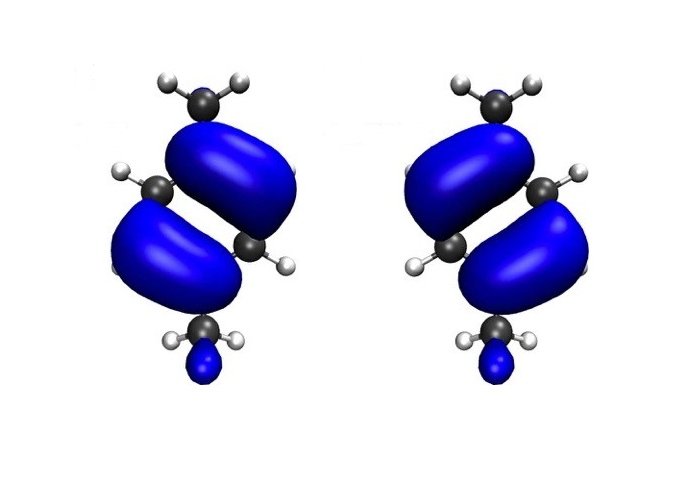

Researchers use quantum theory to show how the motion of the nuclei can lead to the loss of quantum coherence of the electrons in molecules.
In quantum theory, electrons behave like waves and can therefore interfere, as demonstrated in Young’s double-slit experiment. The ability to interfere is related to the 'coherence' of the electron waves: as long as there exists a constant relative displacement between the different electron waves, the system is said to be coherent.
In a new paper, researchers from the Department of Chemistry at Imperial looked at a coherent electronic state that could be created upon ionisation of a molecule by an ultrashort pulse. In this situation the coherence between the populated electronic states leads to interference, and thus the electron cloud oscillates with time.
However, the electrons are not isolated; their motion is affected by the motion of the nuclei in the molecule (even at absolute zero temperature). The fundamental challenge is to understand to what extent the electrons retain quantum coherence, in the presence of interactions with the moving nuclei. Is it long enough to be observed by experiment?
The team addressed this question by solving the time-dependent Schrödinger equation, i.e. simulating the dynamics of the molecular system with a quantum mechanical treatment of both electron and nuclear motion.
Since nuclei are much heavier than electrons, in many applications, the nuclei are considered fixed (or to move according to classical mechanics) while the electrons move according to quantum mechanics. However, an accurate description of decoherence requires a finer quantum mechanical description of the interplay between electron and nuclei motion, a challenging task for polyatomic molecules.
Co-author of the paper Professor Michael Robb said: “Our simulations give new important physical insights about the predicted decoherence process, demonstrating the interplay of several mechanisms. This is important since knowledge about the electronic motion in molecules and its quantum decoherence is essential for our understanding of chemical reactions, biological processes, and also for quantum computers.”
-
‘Electron Dynamics upon Ionization of Polyatomic Molecules: Coupling to Quantum Nuclear Motion and Decoherence’ by Morgane Vacher, Michael J. Bearpark, Michael A. Robb, and João Pedro Malhado is published in Physical Review Letters.
Article text (excluding photos or graphics) available under an Attribution-NonCommercial-ShareAlike Creative Commons license.
Photos and graphics subject to third party copyright used with permission or © Imperial College London.
Reporter
Hayley Dunning
Communications Division

Contact details
Tel: +44 (0)20 7594 2412
Email: h.dunning@imperial.ac.uk
Show all stories by this author



